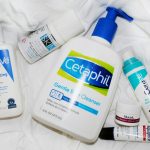How to Achieve Flawless Skin: Expert Advice for Radiant Beauty
Exfoliation: Key to Removing Dead Skin
Exfoliation is essential for removing dead skin cells that can dull our complexion and clog pores. Regular exfoliation helps to reveal fresher, smoother skin and allows other skincare products like serums and moisturizers to penetrate more effectively. For chemical exfoliants, we might opt for products containing alpha or beta hydroxy acids. These acids dissolve dead skin cells without the need for scrubbing.
Physical exfoliants, like scrubs with small granules, can also be effective. However, we should use them sparingly to avoid over-exfoliation and irritation. Generally, exfoliating two to three times a week is sufficient for most skin types. Apply the exfoliant gently in circular motions, avoiding sensitive areas around the eyes. Rinse off with lukewarm water and follow up with a moisturizer to soothe the skin.
Consistent exfoliation helps to maintain a bright, clear complexion by keeping our skin free of dead cells and unclogging pores. This step is crucial in any well-rounded skincare routine.
Advanced Skincare Treatments
To achieve flawless skin, we must consider advanced treatments that target specific concerns like aging, pigmentation, and texture. Serums and antioxidants play a pivotal role, as do powerful ingredients like retinol and vitamin C.
Incorporating Serums and Antioxidants
Serums are concentrated formulations designed to deliver active ingredients directly into the skin. For example, a vitamin C serum can brighten the complexion by reducing pigmentation and promoting collagen production. Niacinamide, another popular serum ingredient, minimizes pores and strengthens the skin barrier, making it effective for all skin types.
Hyaluronic acid serums are excellent for hydration. They attract moisture, providing a plumping effect that reduces fine lines and wrinkles. Antioxidants are equally crucial; they combat free radical damage from environmental factors like UV rays and pollution, preserving skin health. It’s best to apply these serums after cleansing but before moisturizing to maximize their benefits.
The Role of Retinol and Vitamin C
Retinol, a derivative of vitamin A, accelerates cell turnover and stimulates collagen production. This can help diminish signs of aging such as wrinkles and fine lines. Retinol should be used in the evening due to its sensitivity to sunlight. Beginners might start with a lower concentration to minimize irritation.
Vitamin C is another powerhouse ingredient. It brightens the skin, reduces pigment issues, and provides antioxidant protection. Incorporating a daytime vitamin C serum can enhance the effectiveness of sunscreen, offering added protection against UV damage. When used together with retinol, this combination can significantly improve skin texture and tone.
Correct usage and consistent application of these treatments can lead to visible improvements, offering a clear, youthful complexion.
Moisturizing Techniques for Hydration
Proper moisturizing techniques are crucial for maintaining skin hydration and elasticity. By choosing the right products and understanding how hydration affects skin structure, we can achieve healthier, more radiant skin.
Choosing the Right Moisturizer
Selecting the correct moisturizer is key to effective skin hydration. Creams and lotions rich in humectants, like hyaluronic acid and glycerin, draw moisture into the skin. Emollients such as shea butter and jojoba oil help to smooth and soften the skin’s surface. For even deeper moisture retention, we should look for occlusives like petrolatum or beeswax that form a barrier to prevent water loss. When dealing with dry or sensitive skin, we might choose fragrance-free products to avoid irritation. Regular application after cleansing ensures that our skin retains its natural moisture balance, promoting a healthy, glowing appearance.



